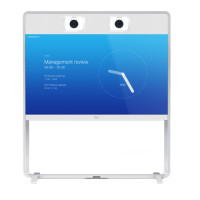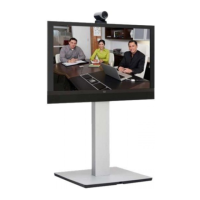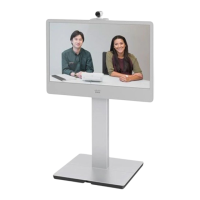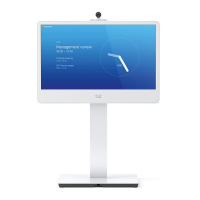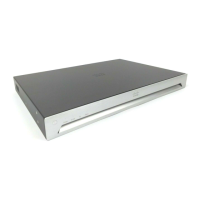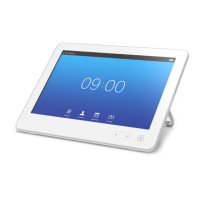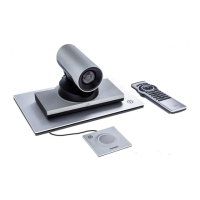D15335.02 Cisco TelePresence MX700 and MX800 API Reference Guide CE8.0, FEBRUARY 2016.
Copyright © 2016 Cisco Systems, Inc. All rights reserved. 138
Cisco TelePresence MX700 and MX800
API Reference Guide
xStatus Audio Output RemoteOutput [n] Input [n] Gain
Shows the gain (dB) on the input, when input is connected to the remote output. Range from
-54 dB to 15 dB, where -54 dB equals Off.
You can run the command xStatus Audio Output RemoteOutput to find the identity [n] of the
output and input.
Value space of the result returned:
-54..15
Example:
xStatus Audio Output RemoteOutput 9 Input 1 Gain
*s Audio Output RemoteOutput 9 Input 1 Gain: 0
** end
xStatus Audio Volume
Shows the volume level (dB) of the loudspeaker output.
Value space of the result returned:
0..10 0
Example:
xStatus Audio Volume
*s Audio Volume: 70
** end
xStatus Audio VolumeMute
Shows whether the endpoint volume is set to mute.
Value space of the result returned:
Off/On
Example:
xStatus Audio VolumeMute
*s Audio VolumeMute: Off
** end
Call status
xStatus Call [n]
Shows the top level overview of the call status. The call identity is used when query for
additional information about the call.
xStatus Call [n] AnswerState
Indicates if a call is answered, ignored or has been automatically answered by a system.
Value space of the result returned:
Unanswered/Ignored/Autoanswered/Answered
Example:
xStatus Call AnswerState
*s Call 5 AnswerState: Answered
** end
xStatus Call [n] AttendedTransferFrom
Shows the CallId for the call the current call was transferred from.
Value space of the result returned:
Integer
Example:
xStatus Call 1 AttendedTransferFrom
*s Call 1 AttendedTransferFrom: 1234
** end
xStatus Call [n] CallbackNumber
Shows the remote (far end) number or URI of an incoming or outgoing call, including the call
protocol, for call back. You can run the command xStatus Call to find the call identity.
Value space of the result returned:
String
Example:
xStatus Call 27 CallbackNumber
*s Call 27 CallbackNumber: "h323:firstname.lastname@company.com"
** end

